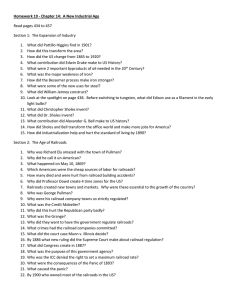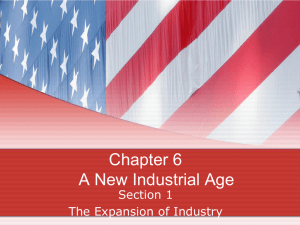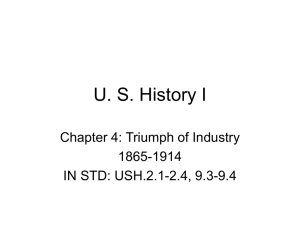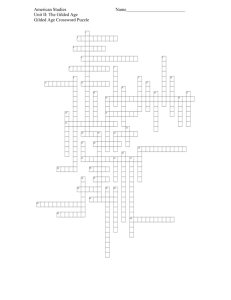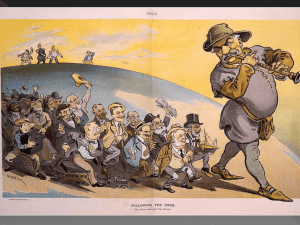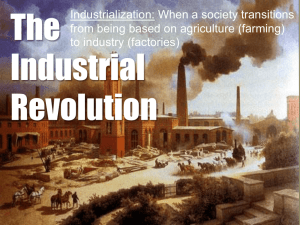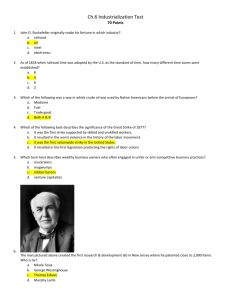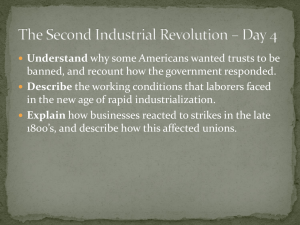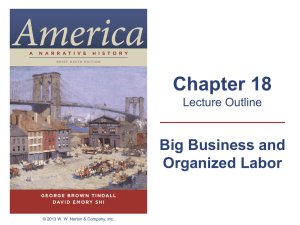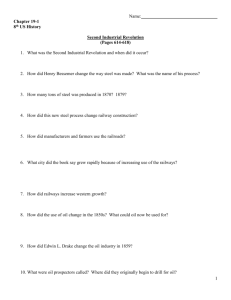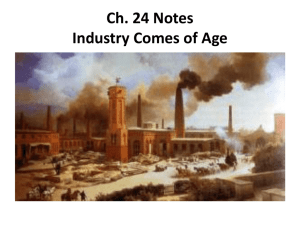Industrial Revolution Reading Guide: Key Figures & Events
advertisement
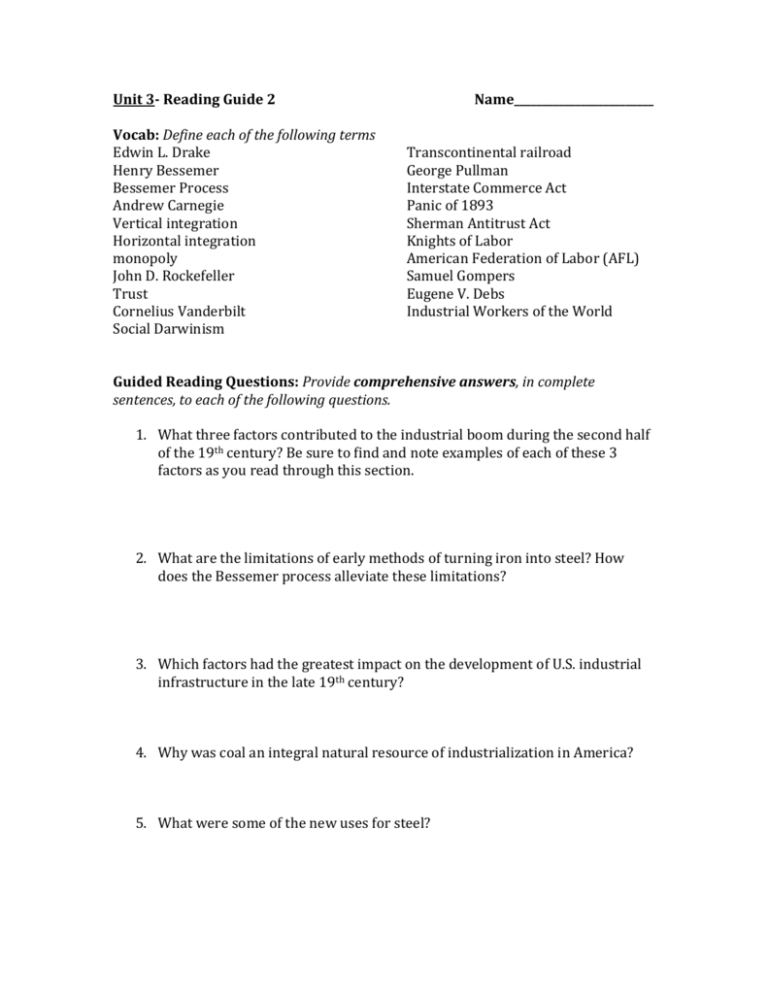
Unit 3- Reading Guide 2 Vocab: Define each of the following terms Edwin L. Drake Henry Bessemer Bessemer Process Andrew Carnegie Vertical integration Horizontal integration monopoly John D. Rockefeller Trust Cornelius Vanderbilt Social Darwinism Name_________________________ Transcontinental railroad George Pullman Interstate Commerce Act Panic of 1893 Sherman Antitrust Act Knights of Labor American Federation of Labor (AFL) Samuel Gompers Eugene V. Debs Industrial Workers of the World Guided Reading Questions: Provide comprehensive answers, in complete sentences, to each of the following questions. 1. What three factors contributed to the industrial boom during the second half of the 19th century? Be sure to find and note examples of each of these 3 factors as you read through this section. 2. What are the limitations of early methods of turning iron into steel? How does the Bessemer process alleviate these limitations? 3. Which factors had the greatest impact on the development of U.S. industrial infrastructure in the late 19th century? 4. Why was coal an integral natural resource of industrialization in America? 5. What were some of the new uses for steel? 6. Make a chart that identifies inventors, their inventions, and the significance of those inventions. 7. Identify the positive and negative impacts of industrialization in the late 19th century. Be sure to note the impacts on health for people in the cities. 8. How did Andrew Carnegie use innovative business practices, and vertical and horizontal integration to master the steel industry? 9. How did industrialists like John D. Rockefeller react to government restrictions on their businesses? What industry did Rockefeller dominate? 10. How did Vanderbilt build his fortune in railroads? Explain his relationship with government and the law. 11. How did philosophers like Herbert Spencer apply Social Darwinism to society? How was Social Darwinism applied to views on the economy? 12. Who did the Central Pacific and Union Pacific railroads rely on to build their sections of the transcontinental railroad? What were some of the obstacles of building that line and how were those obstacles solved? 13. What were the positive changes brought about by the growth of railroads? Be sure to note how the RRs and mail-order catalogues such as Sears & Roebuck are related. 14. Explain the positive and negative aspects of George Pullman’s company and company town in Illinois. 15. Why did farmers complain about the railroads and how did the Granger laws set about fixing those problems? 16. What were the effects of the Panic of 1893 on banks, businesses, employees, and railroads? 17. Why were some industrialists labeled “Robber Barons”? Why might they be given the title of “Captains of Industry”? 18. Provide evidence that the Sherman Antitrust Act was ineffective in meeting its goals. 19. What was the most significant factor in the development of labor unions during the nineteenth century? Provide evidence. 20. What was unique about the Knights of Labor? What tactic enabled Samuel Gompers to develop the American Federation of Labor into the largest labor union in the United States? 21. What were the effects of failed strikes during the late nineteenth century? 22. Why did President Hayes send troops to end the Great Strike of 1877? 23. What was the cause of the Haymarket Affair? What was the effect of aftermath of violence? 24. Why did workers at Carnegie’s Homestead plant call a strike? What was the long-range consequence for steelworkers following the Homestead Strike? 25. For what reasons was the Pullman Company Strike called? When did the strike turn violent? How was the strike put down and what was the outcome for Debs and many of the strikers?
